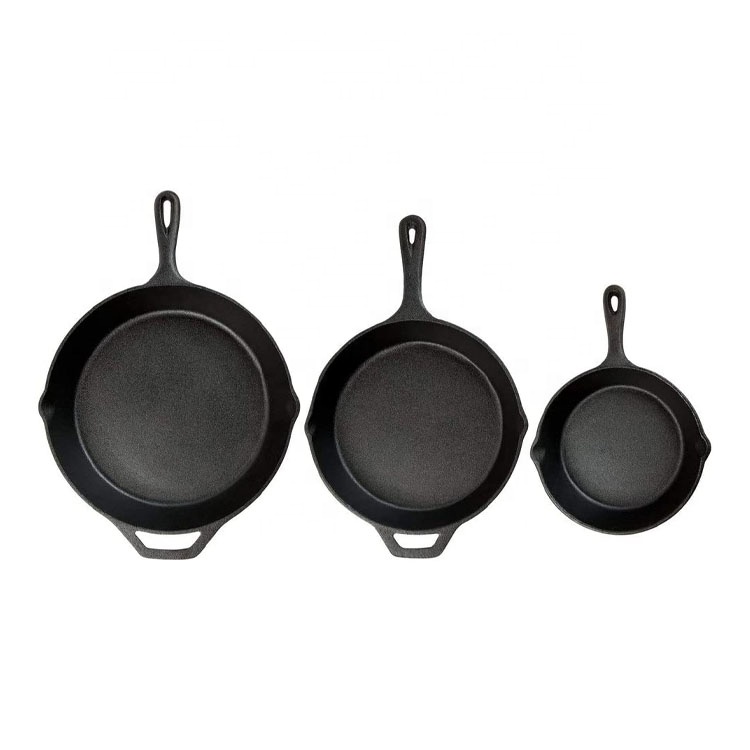
different types of cast iron skillets
Different Types of Cast Iron Skillets
Cast iron skillets are beloved cooking tools praised for their durability, heat retention, and versatility. These skillets come in various types, each designed for specific cooking needs and techniques. Understanding the different types of cast iron skillets can enhance your cooking experience and help you select the right skillet for your culinary adventures.
1. Traditional Cast Iron Skillet
The traditional cast iron skillet is the classic choice for any kitchen. It features a heavy, thick base that provides excellent heat retention and even cooking. Ideal for frying, searing, baking, and sautéing, these skillets can go from stovetop to oven without a problem. They require regular seasoning to maintain their non-stick properties and prevent rust, but with proper care, a traditional cast iron skillet can last a lifetime and even be passed down through generations.
Enameled cast iron skillets offer a modern twist on the classic design. They are coated with a layer of enamel, which eliminates the need for seasoning and provides a non-reactive surface that won’t leach flavors into your food. Enameled skillets are available in various colors and styles, making them aesthetically pleasing as well as functional. They are particularly great for acidic foods, such as tomato-based dishes, where traditional skillets might react with the food. However, they require gentle handling to avoid chipping the enamel.
3. Skillet with a Pour Spout
Some cast iron skillets come equipped with a pour spout, which is a handy feature for draining excess liquids and fats without making a mess. These skillets are especially useful when cooking greasy foods or when you want to save the drippings for a sauce or gravy. The pour spout is typically integrated into the design of the skillet, maintaining its sleek profile while adding functionality.
different types of cast iron skillets

4. Griddle Skillet
The griddle skillet, also known as a flat skillet, features a smooth, flat surface and is ideal for preparing breakfast items like pancakes, eggs, and bacon. These skillets often come with slightly raised edges to contain food and can be used on both the stovetop and the grill. The larger cooking surface allows for multiple pancakes or a full breakfast spread to be made at once, making it a favorite for families and gatherings.
5. Cornbread Skillet
Cornbread skillets are specifically designed for baking cornbread but can be used for other baked goods as well. They often come with a slightly lower side profile to facilitate easy removal of cornbread and feature a unique design that enhances the rustic presentation. Many cooks cherish this skillet not only for its functionality but also for the characteristic crust it imparts to baked products.
6. Dutch Oven
While technically not a skillet, a Dutch oven is a large cast iron pot that shares many similarities with skillets. It features a heavy lid and is perfect for braising, baking, and slow-cooking. Its significant weight ensures even heat distribution, making it suitable for stews, soups, and even baking bread. When it comes to versatility, the Dutch oven is an indispensable companion to your cast iron skillet collection.
Conclusion
In conclusion, cast iron skillets come in various types, each with its unique features and applications. Whether you choose a traditional skillet for its timeless appeal, an enameled version for its easy maintenance, or a specialty skillet designed for specific dishes, investing in cast iron cookware is always a wise choice. Not only do they elevate your cooking, but with proper care, they can be beloved kitchen companions for generations to come. Embrace the versatility and durability of cast iron, and elevate your culinary creations today!
-
Premium Cast Iron Square Frying Pan – Durable Nonstick Griddle for Even CookingNewsJul.08,2025
-
Non Stick Cast Iron Pots and Pans – Ultimate Non Stick Cooking ExperienceNewsJul.08,2025
-
Cast Iron Grill Pan in Oven - Versatile Cooking for Kitchen & Outdoor GrillsNewsJul.08,2025
-
Pumpkin Dutch Oven White – Elegant 5 Qt White Dutch Oven for Versatile CookingNewsJul.07,2025
-
Best Covered Dutch Oven - Durable Enameled Cast Iron, Versatile Cooking PotNewsJul.07,2025
-
Premium Iron Chef Pots and Pans - Durable Ceramic Coated Cast Iron Cookware for Every KitchenNewsJul.07,2025


